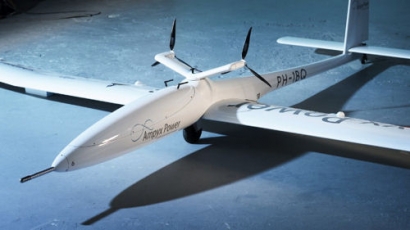
He established the Build Back Better policy, allocating trillions of dollars to clean energy production and employment. Additionally, Biden signed the Paris Agreement, signifying our commitment to greenhouse gas emission reduction. We can expand the renewable energy industry and eliminate our reliance on fossil fuels by advancing green technology.
Various durability issues limit the efficiency and longevity of renewable energy systems. Current photovoltaic (PV) solar panel models generate electricity at a 15% to 20% efficiency rate. Changes in the elements alter production capabilities.
Inconsistent sun exposure and precipitation rates limit a panel's ability to generate clean electricity. We can increase a system's efficiency by expanding its durability properties. Environmental engineers and scientists research renewable energy system protection methods that enhance production.
Technological advancements may additionally extend a system's life span, decreasing waste production. Increasing durability can prevent degradation and broken parts, reducing the need for ecologically harmful production and manufacturing processes.
Developing durable, clean energy systems requires new material implementation. Conventional systems present recycling and repurposing challenges. With system enhancements, we may increase the sustainability of the clean energy industry.
Wind turbine blades are non-recyclable. At the end of their lifespan, they are cut up, transported and buried in a landfill. Global wind farms decommission over 10,000 blades annually with little burial space.
Fortunately, engineers are reinventing the turbine, limiting its waste generation and reliance on natural weather patterns. Various production facilities develop systems using vast quantities of energy and natural resources. If owners place the turbines in low wind regions, their clean energy return is unequal to the production degradation.
Drone-generated wind power is on the rise. Rather than relying on inconsistent patterns, the devices fly in circular motions, producing energy. It connects to a ground-level generator by a tether, sending electricity to the surface.
The drones use fewer materials and generate fewer emissions during production. Their limited reliance on wind increases their durability and sustainability.
Altering the materials used in renewable energy system production also increases device durability. Rainwater harvesting systems rely on solar heaters to generate potable home water. Homeowners can improve the reliability and durability of their renewable system by installing stainless steel wedge wires.
Improving the filtration of stormwater limits its reliance on solar heating, enhancing the system's longevity. The medical-grade filter helps residents shrink both their carbon and water footprint. Improving solar panel material use may additionally increase system durability.
Researchers recently discovered a solar cell material that increases the electricity production efficiency. Perovskite silicon solar cells improve a panel's absorption of solar radiation, improving energy generation. With the material advancement,panels can reach a 27.7% efficiency level.
Stacking perovskite over silicone cells improves production and protection. Adding the material prevents destruction and degradation from the elements. The technology is relatively new, and we can expect system life spans to increase with the enhancement.
Renewable energy system owners can improve efficiency and durability by adopting supportive technology. Many residents add smart devices to their homes, limiting solar and wind power overwhelm. Smart devices are energy efficient, reducing their reliance and extraction of clean electricity.
Smart thermostats autonomously control a home's heating, ventilation and air conditioning (HVAC) system. They connect to the internet, evaluating weather conditions and altering indoor temperatures for minimal energy use. The system also utilizes motion detection, turning a system on or off depending on the property's vacancy.
Homeowners can also install light-emitting diode (LED) lights, reduce stress on a renewable energy system, and preserve its longevity. They extract 75% less electricity than conventional bulbs and last 25 times longer. When using energy-efficient devices, a clean power system can maintain optimal efficiency rates for extended periods.
As Biden continues climate change prevention work, we can expect renewable electricity to replace fossil fuel energy. Generating a national clean power grid requires device alterations and durability enhancements. Over time, as green infrastructure expands, we can reach our carbon neutrality goal.

